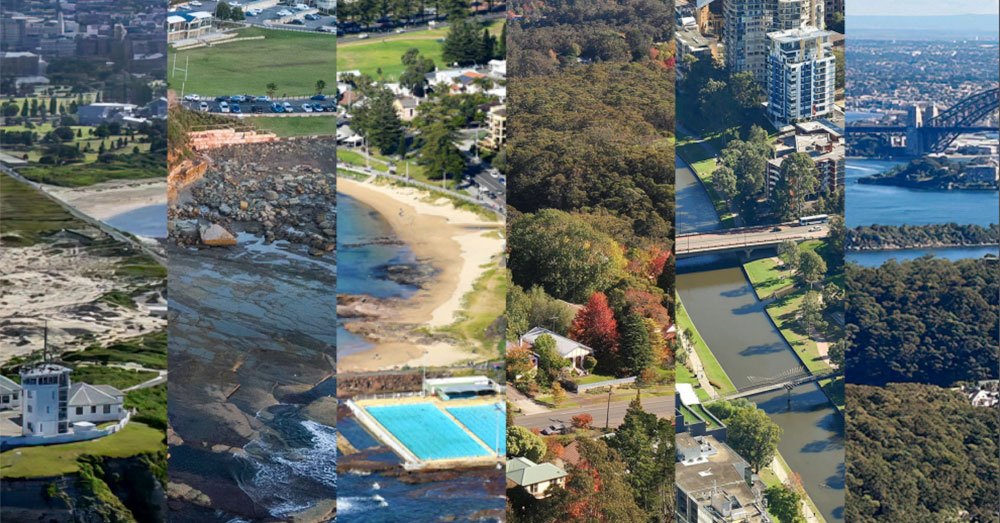“We are in the middle of the century of cities – the hundred years of accelerated urbanisation from 1980 to 2080 that is creating a majority-urban planet.” (source: Greater Cities Commission and The Business of Cities research report ‘Greater Cities: The Global Experience of Planning, Preparing and Promoting the Multi-City Region’). The proportion of the world’s people who live in cities continues to increase. The UN predicts cities will house 6.7 billion people, or 68% of the world population, by 2050. Australia leads the way in urbanisation with close to 90 per cent of us living in our cities. Without careful planning and consideration for the views of all stakeholders will this process work in the future? In this article, we explore the potential impacts and opportunities arising from the mega-region concept development within NSW.
What’s it about?
A multi-city or mega region establishes an integrated network of globally and locally connected cities. The Six Cities Region spans the Lower Hunter and Greater Newcastle City, Central Coast City, Illawarra-Shoalhaven City, Western Parkland City, Central River City and Eastern Harbour City. The vision is being developed by the NSW Government in response to the reality that cities can either address or worsen some of society’s biggest challenges: inequality, congestion, pollution and social exclusion. In their words ‘our six cities vision is to create good jobs closer to where people live, attracting world-class industry and talent, and delivering the infrastructure to connect the cities together.’ The six cities concept has evolved from the 2018 Greater Sydney plan, ‘A Metropolis of Three Cities’. Proposed by the Greater Sydney Commission (as was), it established the Western Parkland City, Central River City and the Eastern Harbour City. The planning priority then was to ensure housing, jobs, infrastructure and services were all within a 30-minute trip for a greater proportion of people. The now Greater Cities Commission is charged with coordinating and aligning the planning that will shape the future of this mega region, accelerating the delivery of key innovation districts and leading discussion on major city-shaping issues. Interestingly, a 2019 Bloomberg report noted that the SoCal mega region, running from Los Angeles to San Diego, is home to more than 20 million people and produces nearly $1.5 trillion in economic output, comparable to the economic output of Australia, and among the world’s 20 leading economies.
What does this mean for people living and working here?
The multi-city region approach addresses ongoing housing challenges, cost-of-living increases, and development constraints in central cities. By distributing growth across a larger area and promoting development in smaller or lower-demand regions, the plan aims to provide more equitable access to housing options. Multi-city regions also offer an opportunity to tackle key environmental challenges, including climate change and urban heat. By implementing coordinated planning strategies at all levels of government, the Six Cities Region aims to promote decarbonization initiatives and mitigate the impacts of rapid urban growth.
The region has three international airports, three deep seaports, and world-class universities, fostering global connectivity and economic growth. The plan aims to enhance collaboration between these gateways, institutions, and innovation districts to accelerate international trade and knowledge-based job opportunities. One of the challenges for planners is striking a balance between attracting international growth and protecting the region’s natural assets. To this end the planning seeks to promote globalised localism, enabling international opportunities while preserving the region’s unique environmental features.
How viable could this concept be?
The success of any plan depends on various factors, including effective implementation, stakeholder cooperation, and adaptability to changing circumstances. While the Six Cities concept holds potential for addressing housing challenges, promoting economic growth, and mitigating environmental issues, its success will rely on several key considerations;
- collaboration among multiple stakeholders, including government authorities, local communities, industry experts, and indigenous groups. Maintaining effective communication and cooperation among these parties is crucial for successful implementation
- adequate investment in infrastructure development, such as transportation networks, utilities, and public services, is vital to support the growth of the Six Cities region, ensuring that resources are allocated efficiently and sustainably will be essential
- prioritising sustainable development practices to minimize the impact on the environment. Incorporating green infrastructure, energy-efficient designs, and sustainable building practices will be crucial to maintain the region’s long-term future
- promoting economic diversity, innovation, and job creation across the Six Cities Region, ie a robust economic framework that encourages investment, fosters entrepreneurship, and supports industries beyond traditional sectors will contribute and is already being witnessed with the recent employment zone reform for 134 LEPs
- adapting to changing circumstances, such as technological advancements, demographic shifts, and evolving environmental concerns. Regular review and revision of strategies and policies will ensure the plan remains relevant and effective over time
Conclusion
The development of the Six Cities Region in NSW presents both challenges and opportunities for the construction industry in general. With a focus on population growth, sustainability, and economic development, the already stretched sector will experience increased demand for infrastructure projects, housing, and commercial spaces. For building surveyors there will be a crucial role in ensuring compliance, safety, and quality standards, while also incorporating sustainable practices. By embracing these opportunities and effectively addressing challenges, the construction industry and building surveyors can contribute to the successful realisation of the mega-region plan in NSW.
The Six Cities Region has many significant advantages over other mega regions. These could, with the right interventions and clear approach, help the region become one of the most advanced and forward-thinking multi-city regions in the world over the next decade. With some mega regions now bigger than G20 economies, it behooves Australian governments to find ways to compete and secure future socio-economic prospects. Ultimately, the viability of the Six Cities Region plan will be determined by the commitment of stakeholders, effective governance, and the ability to address challenges and seize opportunities as they arise.

